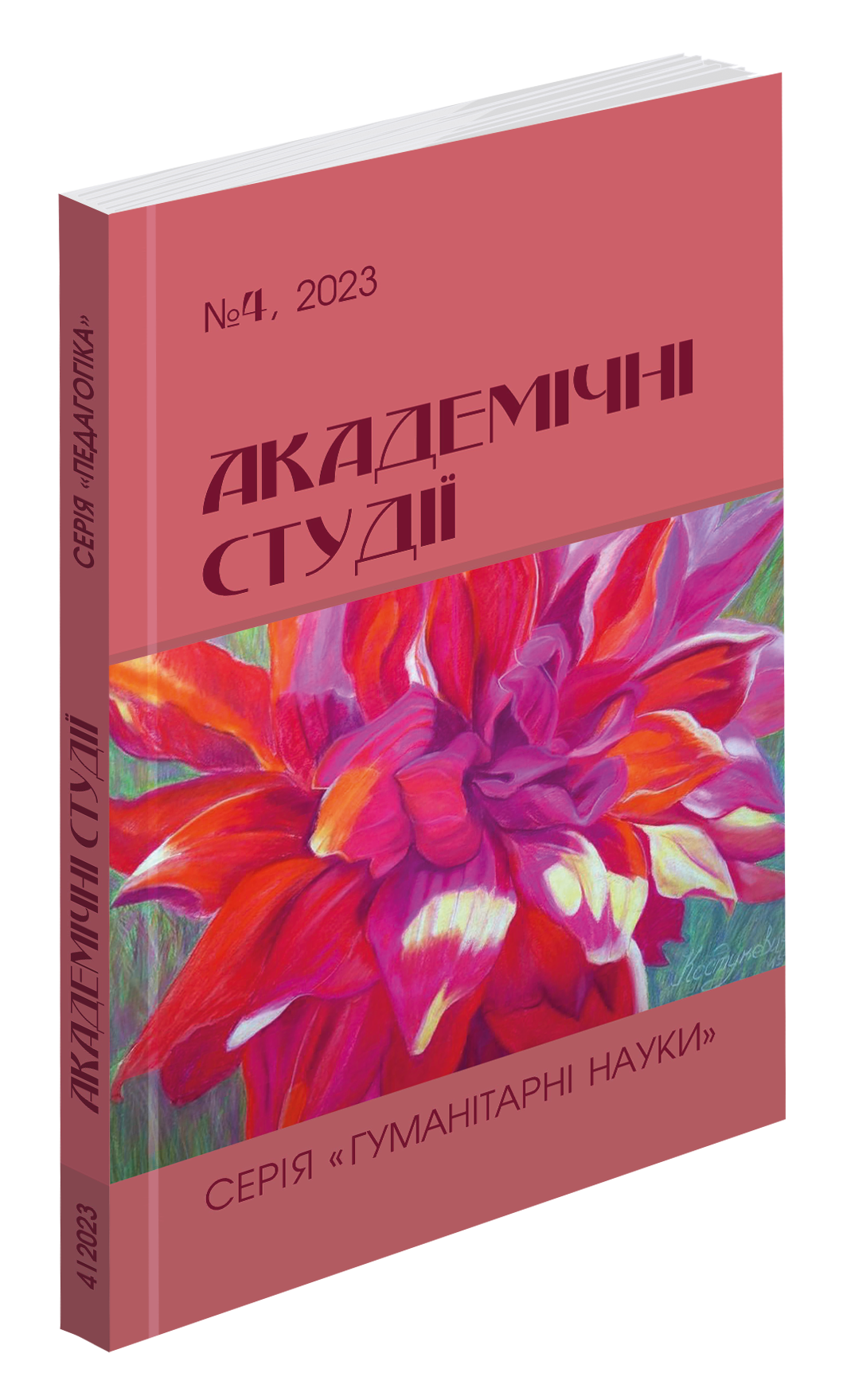Abstract
The study attempts to analyze the first historical novel by V. Terletskyi “The Book of Strength. The Freedom”. The aim of the study is to analyze the problem of representation of history as fact and fiction in the analyzed work. Using the material of the novel, the author of the research tries to determine the correlation between fact, fiction and conjecture, to consider the peculiarities of the portrayal of both well-known and little-known historical figures. The researcher argues that the most important thing in the novel “The Book of Strength. The Freedom” is a realistic portrayal of historical biographies of individuals, which do not allow the use of facts that contradict history. To achieve this goal, the author of the novel actively draws on information from various historical sources, and sometimes provides direct quotes. The artist acts in his work as a historian, philosopher, narrator, and commentator. With the help of conjecture, he adds his own thoughts to the historical information and sometimes gives his own estimates. Thus, in the novel “The Book of Strength. The Freedom” historical fact becomes an artistic fabric of fiction. Conjecture allows us to reconstruct historical episodes for which there was no documentary evidence. The fact in the novel, on the one hand, is a source of inspiration for the writer, and on the other hand, it is a reference point for building an alternative reality. The synthesis of fact and fiction creates a single artistic world of the work, which, on the one hand, has a historical basis, and on the other hand, is supplemented by the author's imagination. When depicting famous historical figures, the author, in addition to reliable facts about their lives, supplements their characterization with information that is often enshrined in stereotypes or legends that have deeply entered the historical social and national consciousness. This is especially evident in the portrayal of such historical figures as Dmytro Vyshnevetskyi, Semeriy Nalyvaiko, and Samiilo Kishka. Due to the lack of information in historical and scientific sources, the artist turns to historical songs, dumas, and legends. The area of interpenetration of fact and fiction and conjecture in the novel is also represented by portraits of historical figures, which, in addition to true historical information, are supplemented by the author's imagination. An important portrait detail in this case is the description of the eyes. In the end, it is sometimes difficult to draw a clear line between fact and fiction, because fiction emerges from real events, is created on their basis, and is overgrown with details that look quite plausible.
References
Мізінкіна О. Український історичний роман ХХ століття: проблема трансформації історичної правди. Проблеми сучасного літературознавства. 2018. Вип. 26. С. 9–17.
Монолатій І. Відкривання минулого в історичній прозі української діаспори. Histor!ans, 23 січня 2023. URL: https://www.historians.in.ua/index.php/en/novi-knizhki/2922-igor-nabitovich-gloria-et-sacrum-istorichna-prozaukrajinskoji-emigratsiji-lublin-wydawnictwo-umcs-2022-230-s (дата звернення: 12.11.2023).
Сергійчук В. Барський староста Б. Претвич. Український історичний журнал. 1990. Вип. 3. № 349. С. 124–131.
Стасик М. Історичний роман В. Терлецького «Книга Сили. Віра». Вчені записки Таврійського національного університету імені В. І. Вернадського. Серія: Філологія. Журналістика. Т. 33. Вип. 3., 2022. С. 234–240.
Тарас Шевченко. Зібрання творів: У 6 т. Київ : Наукова думка, 2003. Т. 1: Поезія 1837–1847. С. 348–354.
Терлецький В. Книга Сили. Воля. Роман. Львів : Кальварія, 2018. 336 с.
Чухліб Т. Проект «Козацького князівства» – історична альтернатива політичного устрою Гетьманщини? Український історичний журнал. № 4 (517), 2014. С. 72–73.
А. Švedas: istorikai neturi teisės kabinėtis prie rašytojų. URL: https://www.bernardinai.lt/2013-02-09-a-svedasistorikai-neturi-teises-kabinetis-prie-rasytoju/ (дата звернення: 12.11.2023).
Skórnicki J. Powieść o Romualdzie Traugutcie. Życie Literackie, 1958. nr 6. s. 3.

